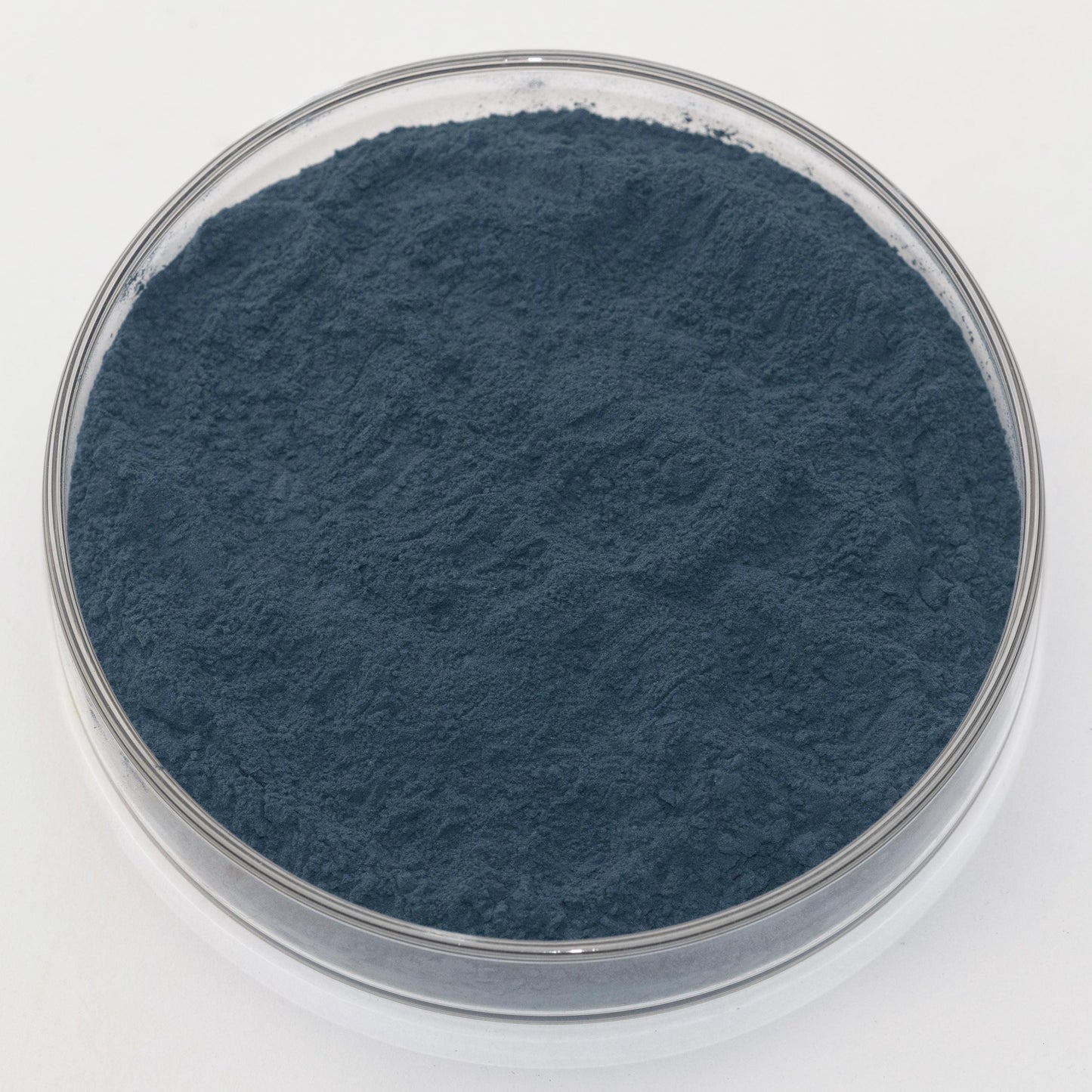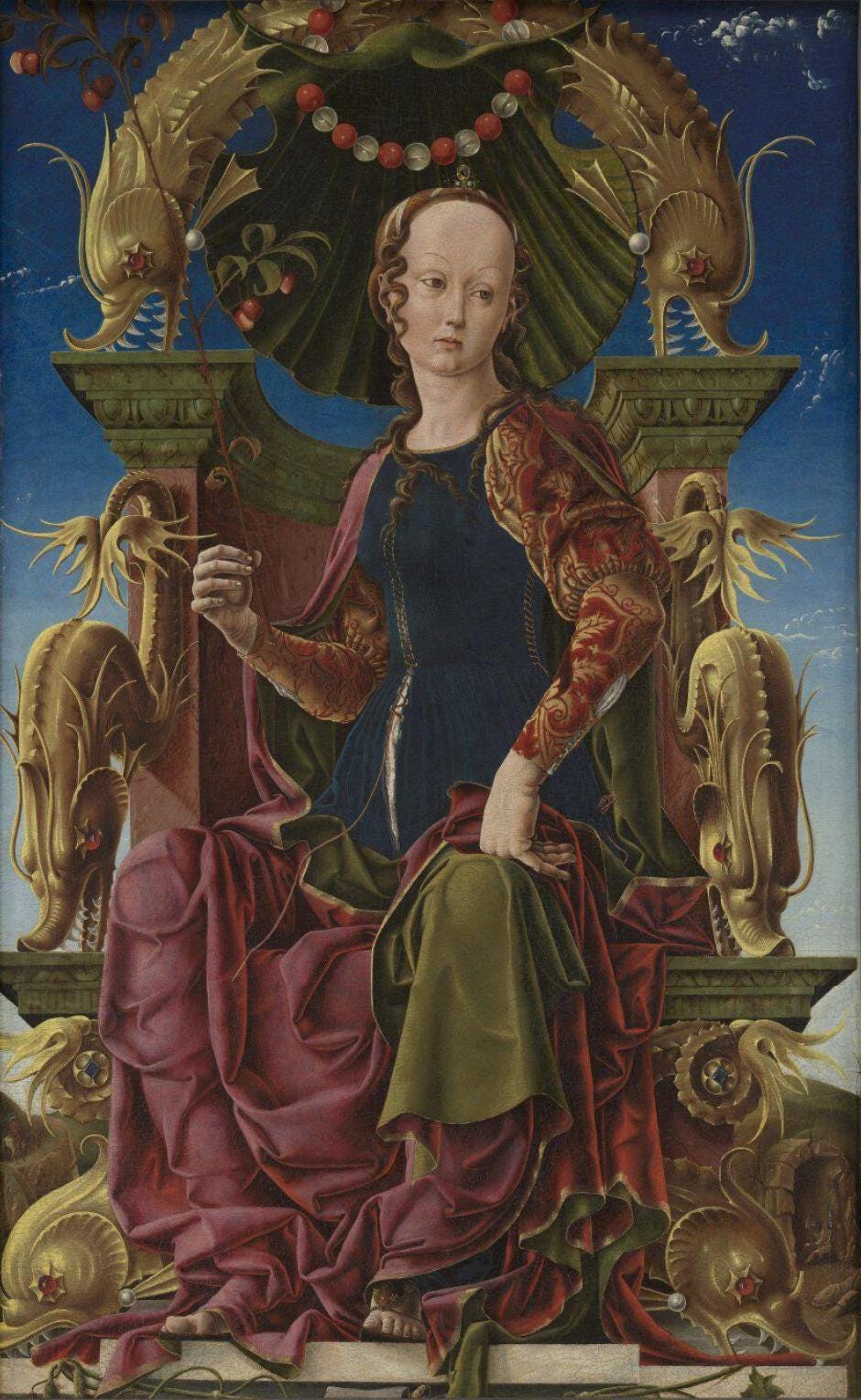Woad
Woad
Couldn't load pickup availability
Share


Description
Woad is a handmade natural single-pigment blue colorant, historically extracted from the leaves of Isatis tinctoria, a flowering plant native to Europe and parts of Asia. The pigment is derived through a complex fermentation process in which the leaves are crushed, soaked, and allowed to oxidize, producing a rich, earthy blue. Woad was the primary blue dye in Europe before the introduction of indigo from the New World and Asia.
Woad can function as both a dye and a pigment depending on its preparation. As a dye, it is used for textiles, paper, and other absorbent surfaces, bonding with fibers through the use of mordants. As a pigment, woad can be precipitated onto a solid base such as chalk, alum, or clay to create a lake pigment suitable for painting. This process transforms the soluble dye into an insoluble form, allowing it to be ground and mixed with various binders like gum arabic, egg tempera, or oil for use in painting, ink-making, and historical art restoration.
Woad produces a soft, slightly muted blue with a range of variations depending on the dyeing technique and mordants used. Unlike synthetic blues, woad has a distinctive warm undertone and works exceptionally well in layered dyeing processes. It is highly durable when properly fixed, making it an excellent choice for textiles, historical reproductions, and traditional painting applications.
History
Woad has been used as a colorant for thousands of years, dating back to Neolithic times. Ancient Egyptians, Celts, and Vikings all valued woad for its deep blue hues, using it to dye textiles and, in some cases, as a body paint. Woad-dyed fabrics were found in Iron Age burial sites, and historical records suggest that Celtic warriors, such as the Picts, used it as a form of body decoration in battle.
During the Middle Ages, woad became a cornerstone of European dye production, particularly in France, Germany, and Britain. Woad-growing regions such as Languedoc in France and Thuringia in Germany flourished as dyeing centers. The plant was so economically significant that woad merchants and dyers formed guilds, and its trade was highly regulated. In the pictured artwork 'A Muse' by Cosimo Tura, woad or indigo is used in the robes of the figure (perhaps Calliope) in contrast to the Fra Angelico or lapis used in the sky.
With the arrival of indigo in the 16th century, woad gradually declined in use. However, it remained popular in certain regions, especially in traditional textile production. Today, woad is still used by natural dyers, textile artists, and historical reenactors, preserving its legacy as Europe’s ancient blue. As a pigment, woad lake has been revived in modern historical painting techniques and restoration efforts.
Health and Safety
Precautions:
Keep out of reach of children and pets.
Do not consume.
Not for cosmetic or food usage.
For further health information, contact a poison control center.
Do not eat, drink, or smoke near dry dyes or pigments. Avoid breathing in fine powder and use a NIOSH-certified respirator with a sufficient rating.
Wash hands after handling.
Dye and Pigment Information
Type: Natural (Plant-derived) from Isatis tinctoria
Suitable Applications: Textile dyeing, Watercolor, Oil, Tempera, Acrylic, Ink
Lightfastness: Good
Opacity: High translucence as a dye, Semi-translucent as a pigment
Other Names: Natural Indigo, Indian Blue, True Indigo, Woad (for European varieties)
Color Index Code: NB1
Image: 'A Muse' by Cosimo Tura from the National Gallery


